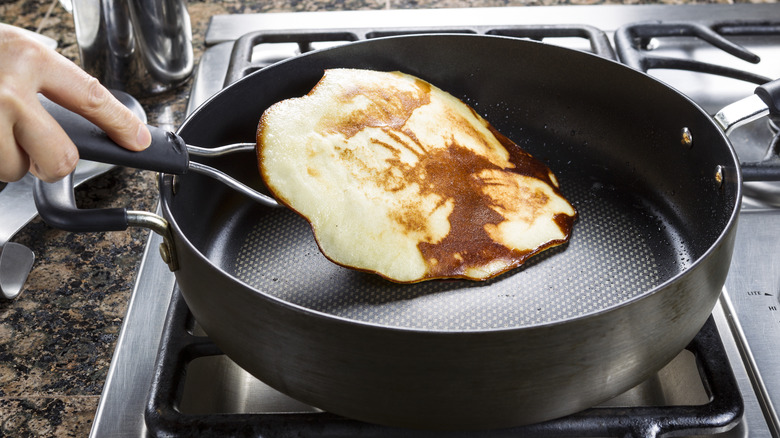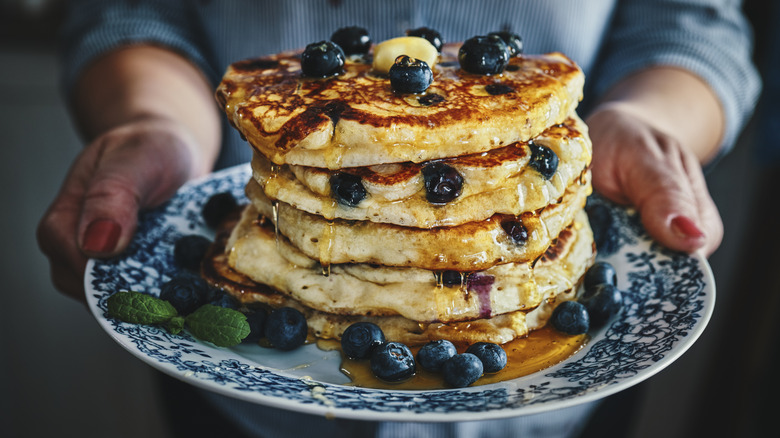It's Time To Get To The Root Of All Your Pancake Flipping Failures
It's a sorry scene to see, and we've all been there. You spent the morning whipping together a delicious batter to make the perfect pancakes (or so you thought). You have your favorite mix-ins and fixins ready to go, and all that's left to do is pour and flip ... but everything falls apart at the last second.
Whether your pancake literally falls apart or it just won't come out the way you want it to, sometimes you struggle to execute that final, important step. And when that happens, there's usually one of three reasons why: your batter is too thin, you're flipping too soon, or your cookware isn't hot enough.
The good news is that all of these issues are easy enough to rectify, and the rest of that batter you worked so hard on can still be salvaged to make the perfect pancakes you dreamed about. Now that we know the root causes of all your flipping woes, let's talk about how to fix them.
How to fix your pancake problems
If your pancake scrunches together or breaks apart when you try to flip it, turning into a half-baked mush, there's a chance your batter is too thin to hold up to the cooking process. But the fix is super easy: Simply add more flour to your batter to thicken it up. To get that light and fluffy pancake consistency, you want your batter to be thick enough to slowly drip off a spoon.
Many times the problem is that you're flipping the pancakes too soon. We get it, you can't wait to eat them and patience is hard — but it's crucial to allow the first side to evenly cook, brown, and firm up before you go at it with the spatula. Obviously, the answer here is to wait longer ... but how long? Look for bubbles to pop up on the surface, it's a key indicator that your pancake is ready to flip.
Lastly, a common cause of pancake flipping failure is your heat source. If your pan isn't hot enough, your pancakes won't be able to cook through enough, and not only will they be too weak to flip but chances are they won't achieve that pretty, even golden-brown exterior that you're going for. Whether you're using a griddle or a frying pan, turn up your heat and give it some time.
Pick up some pancake pro tips
Perfect pancake-making certainly involves some pivoting when you make a mistake, but it's also about what you do right. There are plenty of pro-tips to set you up for success, so next time you whip up a batch of flapjacks be sure to keep some of these tips in mind.
When it comes to the batter itself, start with your wet ingredients and once those are mixed together, add your dry ingredients to the bowl. This way, you'll ensure everything emulsifies and combines evenly, without having to over-mix. And if you let your batter rest for a bit, the leaveners will have time to activate which will produce fluffier results.
And then comes the browning: We all want that deliciously appetizing, even brown, slightly crispy edge to our pancakes. To achieve this, make sure your griddle or pan — even a non-stick — is fully and evenly coated in a thin layer of oil (vegetable oil tends to work best). Grease right before you add your batter so the oil doesn't get too hot, and repeat in between batches.


